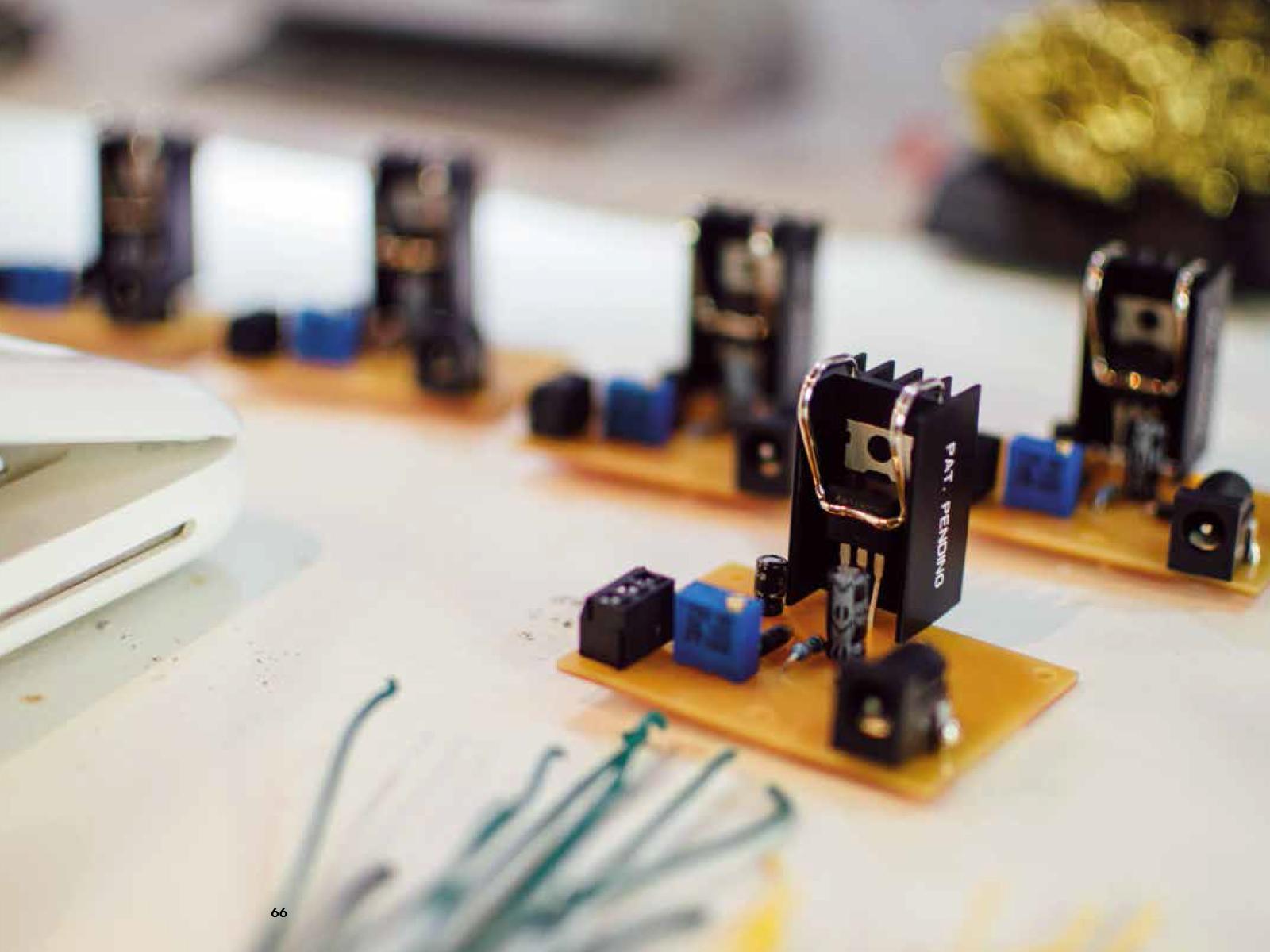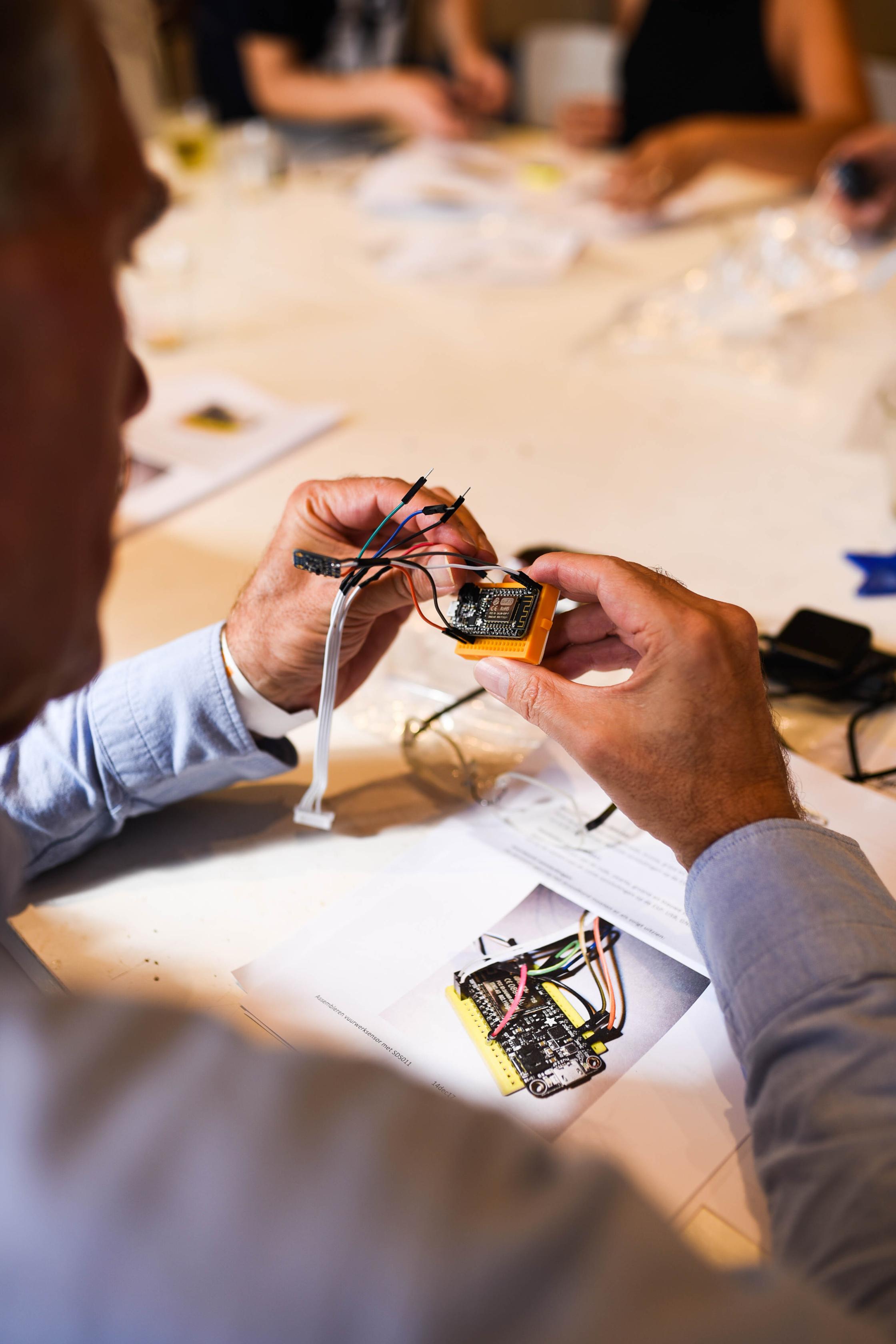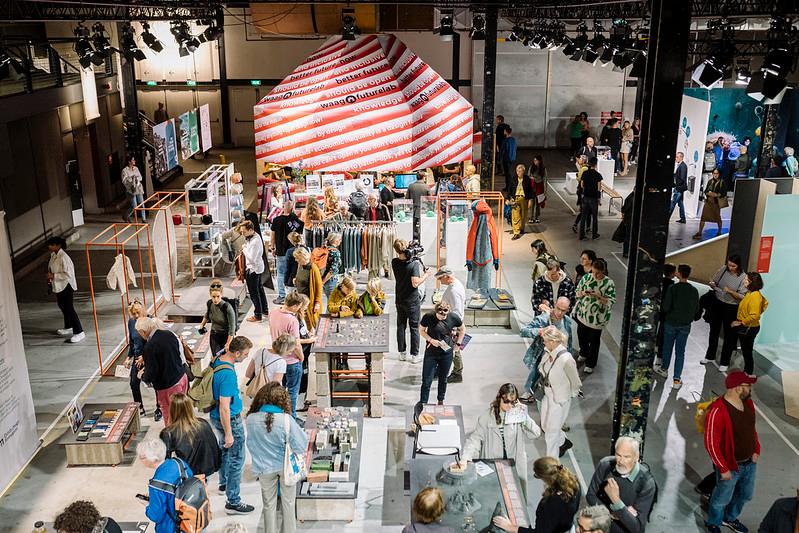Publishing files, sharing the code of apps and working on improvements with the community: these are practices mainly connected to the open source software movement. But in hardware, there is a big shift taking place as well - a shift towards innovation and product design that heavily involves the community in the design process, as well as in the reasons for creating hardware in the first place. Starting last year, Waag is a partner in a European research project called OpenNext, in which this open source hardware movement is researched and empowered. How can we better connect open source hardware communities and companies? Miha Turšič is currently researching open source hardware, community involvement and concern driven innovation for Waag.
What actually is open source hardware?
At Waag, we understand technologies not only through their use, but also through how they are made. We especially look at who is involved in their development. Open source hardware (OSH) is not only about transparent, accessible and reproducible hardware, but it is mainly focused on a participatory- and community-driven design process. This means that critical problems and challenges around communities are the fuel that drive the innovation process. The hardware is open, but more importantly, the process of designing the hardware is open as well. People start to organize and develop hardware themselves and cooperate with companies. Public agendas become involved in the design process, leading to material societal innovation.
Why is Waag looking into open source hardware at this moment?
Open source is in Waag’s DNA. It derives from creative commons and open design developments in the last twenty years, and leads us to the concern-driven innovation that we are developing within the OpenNext pilots. Air pollution and urban waste are some of the concerns that worry communities that we work with, and we are putting these concerns in the centre of the innovation effort. These are crucial and pressing issues that are at the top of many citizen’s agendas. And since these issues are widely shared, we are also addressing them in broad collaborative efforts, with other stakeholders like academia, industry, government and, of course, citizens.
'Critical problems and challenges around communities are the fuel that drive the innovation process.'
What are good examples of open source hardware?
A hugely interesting example is the platform called Farmhack, where the farmer meets the coder. They are developing an ‘ecosystem’ where many different expertises, like coders, designers, farmers and public servants, meet to tackle challenges in the Dutch agricultural system. Explicitly, they are driven by the community’s need to create a sustainable and healthy food production chain.
Open Source Beehives is an important example as well, where many different options for involvement are offered. You can just buy a beehive and use it at home, or download the ‘blueprint’ (source files) to compile one on your own. And on the other hand they offer a lively visited online platform to make adjustments and improvements to the existing hardware, heavily driven by an enthusiastic beekeepers community.
A more artistic perspective is brought up by Kate Crawford and Vladan Joler, who took an existing piece of smart home assistant hardware, and ‘anatomically’ researched it themselves through all the aspects that are inside of this black box. From the materials to the workers conditions, and from the data streams of the AI to the salaries of the people in the production chain. In doing so, they made a very closed off AI system into an open source artwork.
So, does this mean there are various types of ‘openness’ in open source?
Yes, the stage in the process in which communities are involved, can vary between the many different OSH projects. From reparability and the options to change and adapt products, or sharing of the source files, to involvement in the design- and production process. We can see a move towards more involvement and, more importantly, towards a new starting point for development and innovation: the community’s concern. So when we look at open source hardware innovation, we always ask ourselves: how and where is the community involved? And are their concerns being adopted in the process?
Why would a company share the design of their products?
In general, companies produce value for the customers while appropriating returns on that value. In the case of OSH, the value is produced not only by the company but also by communities of active users, developers and mentors. In such a context, the value is created and captured by both the company and the community.
More particularly, the community increases the customer’s perceived value, while reducing the cost and shortening the time before the product goes to the market:
- community members help companies better identify the market needs and provide feedback during the product development iterations,
- co-development with the community contributes to the functionality and performance of the product,
- openness usually provides customisation or DIY options that make users more creative,
- with active communities, companies demonstrate trust into their products or solutions,
- community members can help decrease the risk of product failure and help reduce internal R&D cost,
- already having a community helps reducing marketing and sales cost,
- communities are also a talent pool for company recruitment.
So, OSH approach can increase customers’ perceived value and decrease the cost of running a company. These types of business models aren’t developed very broadly yet. OpenNext wants to take the next step in this development.
What can the OSH community learn from the (free and) open source software movement?
The open source software (OSS) movement has quite some history and vibrant communities that work on sharing, reproducing and improving existing and newly developed software. As recent publications show, lots has been achieved, but there is still a lot of work to do.
In OSS the source is the code, while at the OSH it’s the design, production or process documentation. And while the sources differ, they utterly share the way communities engage and maintain their efforts. Open source is about communities, shared values and mutual goals. What they both share are community platforms for co-design and co-development, like Wikifactory: repositories of shared resources and evolving business and governance models.
What will Waag be doing in the OpenNext project?
As a makerspace, Waag wants to create a bridge between the open source hardware communities and companies. We hope to support them in achieving more community driven innovation. We’ll do this by testing methods and tools for collaboration and the sharing of our models with a broader network.
To test our research we’ll start with two pilots. The first, together with Sodaq, is about air quality sensors. They are developed in collaboration with communities concerned about air pollution and official air quality measurements.
The second one is a pilot with Fiction Factory, a highly professional and well-equipped construction studio that will focus on creating a learning environment that stimulates open research and innovation though common values and concerns.
Are you interested in joining these pilots and workshops? opennext ⟨ at ⟩ waag.org.
> More information on the European research consortium


